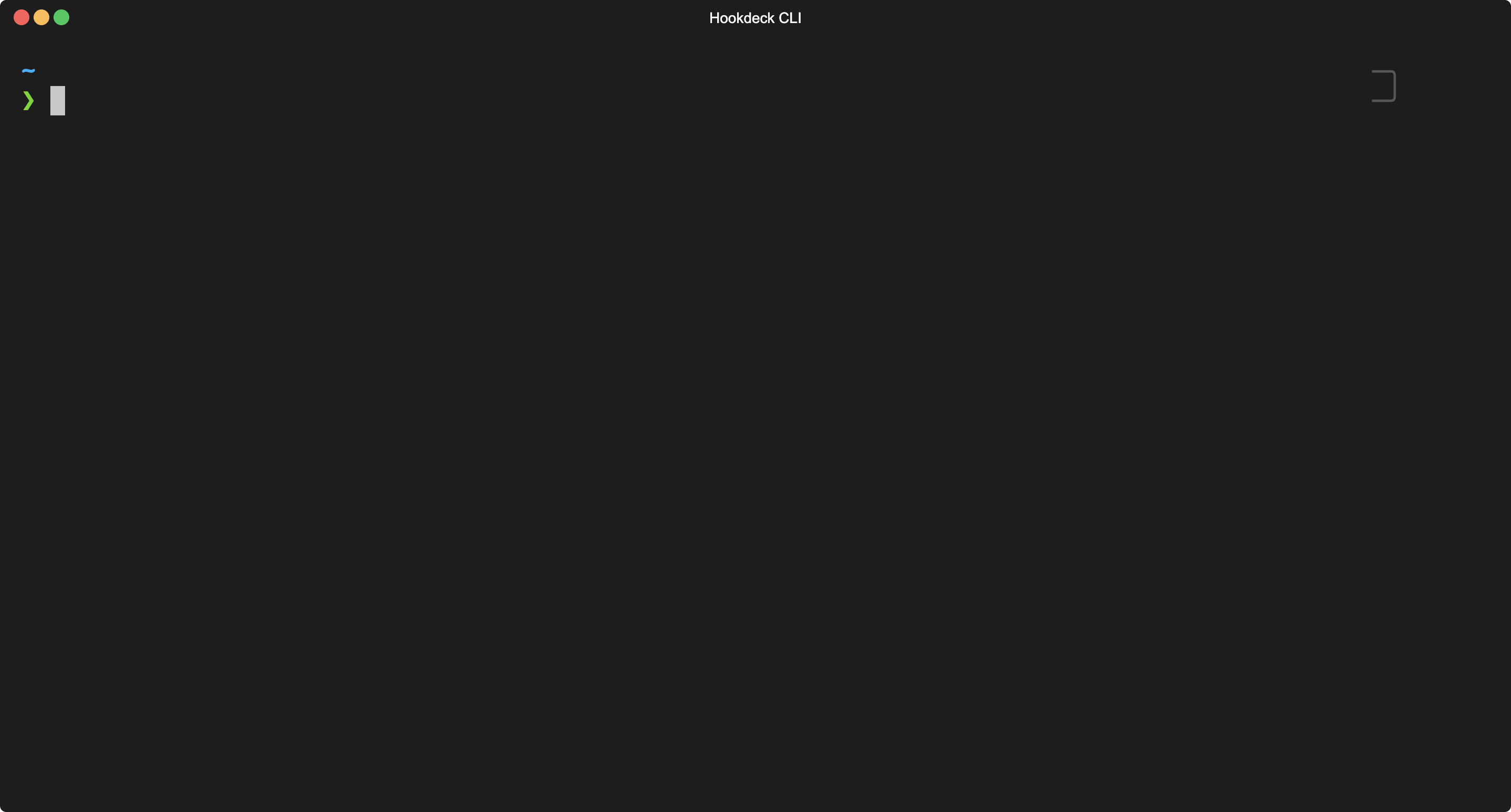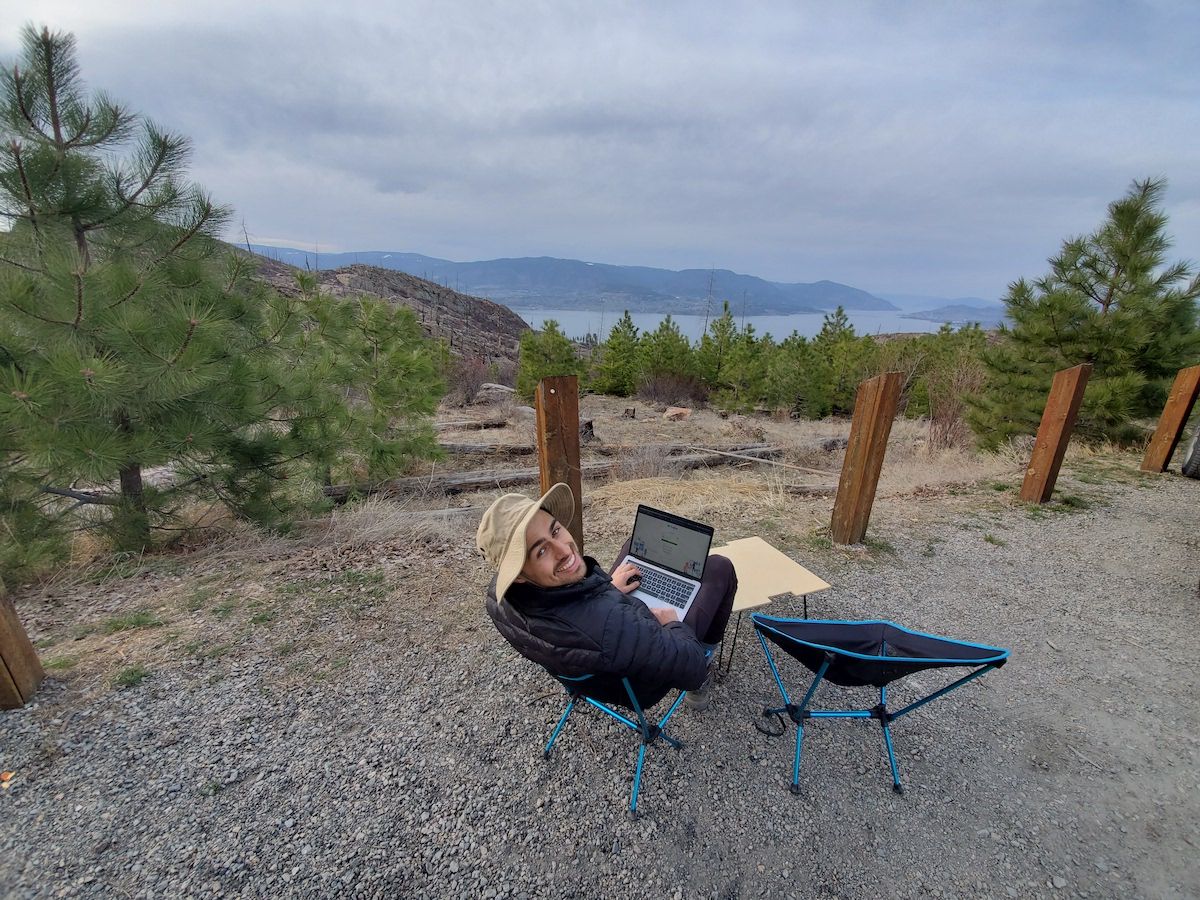Console
Interview with
Alex Bouchard
CEO, Hookdeck
An inbound webhook store and forward proxy.



What is Hookdeck? Why did you build it?
The idea for Hookdeck originated from when I ran a large Shopify store. We had our own tech stack to manage the business operations. We had been working a lot with the Stripe webhooks. Stripe has this UI to see your webhooks and retry them - this saved me a few times when we had a bad release or a 3rd party dependency was down. You can just generally trust that you’ll know if something goes wrong and you’ll be able to do something about it.
But with Shopify there's not much we could do when things went wrong with the webhooks. That left me with a very sour taste: "Why can't everybody be like Stripe?". I started brewing around this idea, why can't we make the webhooks independent to the platform sending them?
Once I started talking with other people in the field, I realized that what was really going on is that many teams were building around this problem. They would essentially be rebuilding the same things on top of GCP or AWS to put in place those ingestion systems, queues, logging, alerting, etc. This is expensive - spending developer time on things that are not really contributing to the end user. It's more of a necessary evil for the whole product to work. It's rarely the actual product.
We've found there's two different categories of tech teams right now working with webhooks. The first is companies running at scale where they have a big team and can dedicate time to solving this themselves. Sometimes things go wrong, such as when there's very large spikes during Black Friday type of events, but they often have their homegrown solution.
On the other side of the spectrum (which I used to be in), there are companies like small ecommerce sites where it's not reasonable to invest two months trying to build webhook ingestion and processing infrastructure. What tends to happen is you essentially just accept errors as part of the cost of depending on webhooks.
This is where Hookdeck comes in. It gives you the option of not having to bear the developer (or infrastructure complexity) cost because we can provide it for you within a few minutes, and scale as you grow. You never really have to think about it.
Often teams will leave it until too late. You might be aware of the problem but then suddenly you’ll hit a point where errors are starting to happen at a higher frequency and start getting really concerned by it. Then it becomes much more of a last minute fix. This is when problems arise. Everyone underestimates the challenge. If you just get started on Hookdeck, you don't have to bear any of that cost. As you scale, you will never really hit any of those points, because it will just scale with you.
It's a classic buy versus build problem. In our case, we found it makes a lot of sense for most teams to be using a third party for something like this.

Hookdeck CLI receiving webhooks locally.
How are developers solving this today?
In development most people use ngrok. But the free version only gives you ephemeral URLs, so people are always spinning up new URLs to get requests proxied locally. As we started venturing into this we've decided to offer local development URLs completely free of charge. As of a few days ago everything that's development related can be used without a Hookdeck account. You can just generate a URL and receive your webhooks locally.
In production, the most popular solution is SQS. I often get asked, why can't I just use Lambda, and SQS, and so on? You realize that the webhook ingestion problem is much bigger than that. Partly because it's not just about receiving it and queuing it. You get all the concerns around logging, retrievability and troubleshooting. We find that, even though you'll have this built out, you'll spend days just being in your logs in CloudWatch trying to figure out what happened and trying to retrieve data to replay it.
SQS is really just the tip of the iceberg. There is still quite a bit of code that you'll need to write and deploy through Lambda functions, to properly interact with those queues. Queues seem simple until you start working with them, and then it always ends up being a lot more time than you thought it would.
A lot of edge cases arise because of the fact that you don't really control the volume nor do you control the payload itself, which is why it makes sense to offload that to someone like us.
Even if you know that you've missed, say 50,000 webhooks in a weekend because of a bad release, or because a third party dependency went down, there's really nothing you can do about it. You'll have to write a script to go and pull those events from the original API and try to replay them. In Hookdeck, there's a little retry button you can hit and the problem is solved.
What does "a day in the life" look like?
I work on Hookdeck most days, but I manage to make the most of the days by rock climbing, skiing, or doing something of that sort! I spend a lot of my day outdoors doing different kinds of sports.
It works especially well during the ski season, because it's one of those sports where you get completely cooked in two or three hours. I used to go to the hills, ski like a madman for three hours, then have the rest of the day to work...which I'm super grateful for. I try to schedule my meetings and calls with customers and prospective customers in between my rock climbing sessions now. I've been extremely lucky to be able to do that.
Otherwise, I’m working on Hookdeck. I'd say about a third of my time is spent on the product design and user experience, a third of doing outreach, and a third one working specifically on the tech, architecting new features and writing more tests.
What does the team look like?
There's four of us right now. Three engineers working on the technical team, then my co-founder Eric Bang-Tri Tran, who is in charge of the business side of things like operations and business development. Shawn Parent and Maurice Kherlakian are senior engineers - very experienced with large scale, high reliability and concurrency systems.
I work on the product side of things. I started my career as a product designer. For me the development and technical side of things has always been a means to an end, building the vision for a product that I had. I'll spend more of my time and more of the effort on that side of things.
But of course everybody does whatever is the most important at that time. Reliability is the most important thing on the engineering side, so this is where most people are focused.
How did you first get into software development?
In a previous company I worked at, the founder of the company kind of made me pick. He told me, "Alex, you can't really do both design and engineering." I picked design, but then maybe three or four months into that job I was already working on the backend. I can't quite recall how that happened. I say I started as a product designer, but the truth is, in my heart, I've always been doing both.
The way I really started was with video games. When I was about thirteen years old, I started working in Unity building games and so on. I remember writing game design documents that would be 20 or 30 pages long for games that I was sure I would release one day, but then obviously never did.
Then I moved into web-based technologies. I'm still self-taught in the sense that I didn't have formal studies in it. I've just been hacking away for a decade or so, and that's how I got where I am.
What's the most interesting challenge you faced building Hookdeck?
Let me start with reliability. One of the interesting technical challenges has been, what credible things can we do and say to make it sufficiently reliable for someone to believe that we'd be more reliable than their own system? We're trying to have better odds at ingesting and delivering your webhooks then you would.
I see a lot of startup founders saying, "Oh, reliability is a priority, and we will not go down.” Frankly, that's just a little bit delusional, in the sense I know I'm not going to do better than the folks at GitHub, or AWS, and so on. Everybody has their outages.
As a small startup, we can't make the argument that you have 200 SREs working on this. So we think about the things that we can do for someone to believe in the reliability of Hookdeck. Our approach has been to say, "Well, listen, the most critical part for us is the ingestion. As soon as we've received and captured a webhook, what happens down the road, we can recover from, but if we miss the webhook, we're in a very bad spot, because then there's really not all that much we can do about it."
We've decided to completely isolate the ingestion from the rest of the system. There's no shared dependency, there's no shared code, there's no shared deployment pipeline. Any form of code changes to the core would not deploy or re-trigger a new deployment on the ingestion. We've also kept the number of dependencies to a minimum.
The second challenge, which is maybe a little bit more practical in terms of feature set, is throttled delivery - to be able to act as a queue. We tell you: don't use a queue, respond directly and synchronously to webhooks coming from Hookdeck. Hookdeck is behaving as a push queue. For those that are familiar with Pub/Sub, it's similar to that in many ways, with just a lot more control over it.
That always felt like something that was essential. Otherwise, it wasn't really credible to say we were helping you with your webhooks, but then you still need to set up your own queues to handle our requests to you. We took a lot of time to figure out the design of how this would work. The main reason for this is that our queue needs to be configurable per destination, per endpoint and per server.
We wanted the rate limit to be dynamically adjustable - you can manually or automatically set the rate limit via our UI or API, and it updates very quickly. We also wanted to be able to adjust that algorithmically, based on response time from your servers, and we wanted that to scale to potentially hundreds of thousands of different destinations. We've had to redo the design for this feature three or four times! On the fourth design I think we got it right. That's been the most complicated feature to build in a way that is scalable, stable and reliable.
What's the tech stack?
Hookdeck runs on Node.js and TypeScript. Right now, we're mostly using Kubernetes. The ingestion specifically is using Pub/Sub and Google Cloud Functions for limitless horizontal scaling. We're also using Postgres for storage, Redis, and now Go. Go was introduced recently with the introduction of the CLI and the local development tools.
What’s the most interesting tech you’re playing around with at the moment?
I used to spend a lot of time playing around with many different tools, but trying to balance rock climbing and Hookdeck, means I have less time for that these days
Recently, there's three things I found very interesting to explore whilst solving some issues at Hookdeck. One has been Kubernetes. Coming into Hookdeck, I had very little experience with it. It is now a key technology to make Hookdeck possible.
A couple of years ago, I would push everything through Heroku but that would be completely unsustainable for something like Hookdeck. Bridging the gap between Heroku and Kubernetes is a very interesting opportunity. Just recently, we had to deploy some websocket servers through Kubernetes, and seeing the breadth of things that you can really do with it has been really good.
I used to fight my way through CircleCI yml files. GitHub Actions has been a blessing. Now, everything at Hookdeck is fully automated in terms of deployment, testing, and so on. The only frustration is that it was so hard to debug. It was great to discover Act in the latest Console newsletter, so I’m going to be trying that!
The third thing for me, which is kind of a more personal thing, is that I've always had a little bit of an imposter syndrome. Maybe because I was mostly working in TypeScript and JavaScript because they were tools that lended themself better to the web stuff I was working on prior.
I've been through some of other languages, like C#, and PHP, and so on, but part of me felt like I needed to pick up something else to just feel a little bit better about myself. Go is just perfect to build a CLI. It bundles into an executable which makes it a very good candidate for that. I've been really excited to pick something other than JavaScript.
We built our CLI fully in Go. That was my first time using it. I love it so far. One of the issues with Hookdeck is that we are indirectly competing with SQS and Pub/Sub on pricing, so working with more lower level languages may help us there. Maybe Go, but I’ve also been thinking that Scala and Rust will be really interesting to explore.
Describe your computer hardware setup
One of the problems going around and chasing the rocks is that it's hard to carry your setup with you. I actually have a van that I travel in. I don't work from it, but I’m not carrying my desk and full setup. I do carry around a 25-inch monitor because I just can't live without it. So I'm working off a 13” MacBook Pro, and I have a 25” Dell Ultrasharp monitor.
For the keyboard, I'm using the Apple Magic keyboard. My mouse is a Razor Death Adder v2. I've had the DeathAdder for the last 15 years, since it was released. Every two or three years, it gets just too dirty that I need to buy a new one. I'm possibly on my sixth or seventh DeathAdder. I do work a lot just from my laptop nowadays though, because my girlfriend and I basically have to share the monitor. So we have a rotation and a time allocation on it.
Describe your computer software setup
OS: macOS.
Browser: Chrome.
Email: Gmail.
Chat: Slack, and we’ve recently introduced Basecamp. It's a great tool for asynchronous communication.
IDE: VS Code.
Source control: Git.
Describe your desk setup

Usually it's just the table that is available. A dining table we just pull up the monitor onto. Because we travel between places, we just go around and make do with what we have.
What do you do for internet access when you're just driving around?
Usually, the LTE is pretty good, so I'll just pop that on and it does the job. I've been looking into getting an antenna on my truck, because it's actually a thing you can do to get a little bit better reception on the LTE. Perhaps Starlink will finally allow traveling around! Fingers crossed. I'm in Canada, so at least I’m in the right latitudes for Starlink. Maybe we'll get lucky.
When coding
Daytime or nighttime? Day.
Tea or coffee? Tea.
Silence or music? In theory, music, but I get into this thing that my girlfriend calls the ‘vortex’, where I just forget about the whole world around me, and I forget to put on the next song. Music lasts for maybe half an album, or an EP, and then I forget to play anything else, and I'll go on for hours in silence.
What non-tech activities do you like to do?
Obviously, a bunch of things outdoors. We travel around, find cool places to climb, ski or hike.
Find out more
Hookdeck is an inbound webhook store and forward proxy. It was featured as an "Interesting Tool" in the Console newsletter on 6 May 2021. This interview was conducted on 7 May 2021.
Subscribe to the weekly Console newsletter
An email digest of the best tools and beta releases for developers. Every Thursday. See the latest email